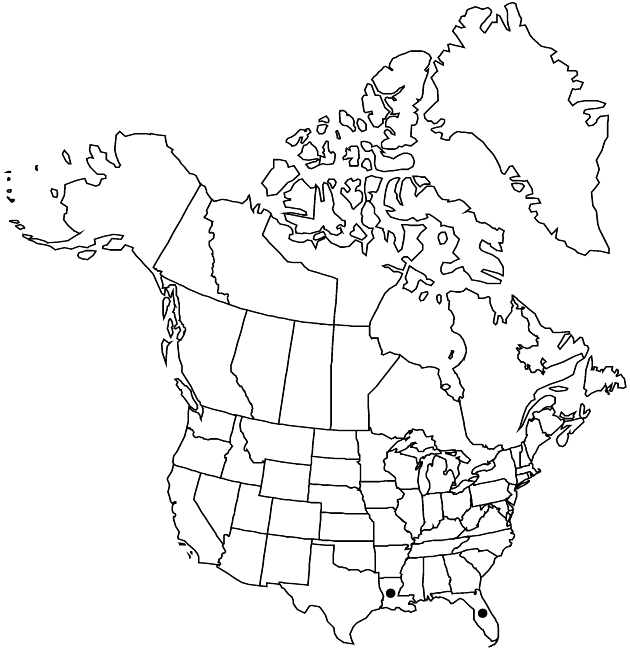Difference between revisions of "Tithonia rotundifolia"
Contr. Gray Herb. 52: 41. 1917.
FNA>Volume Importer |
imported>Volume Importer |
||
| (One intermediate revision by the same user not shown) | |||
| Line 6: | Line 6: | ||
|place=52: 41. 1917 | |place=52: 41. 1917 | ||
|year=1917 | |year=1917 | ||
| + | }} | ||
| + | |special_status={{Treatment/ID/Special_status | ||
| + | |code=I | ||
| + | |label=Introduced | ||
}} | }} | ||
|basionyms={{Treatment/ID/Basionym | |basionyms={{Treatment/ID/Basionym | ||
| Line 29: | Line 33: | ||
|elevation=0–20+ m | |elevation=0–20+ m | ||
|distribution=Fla.;La.;Mexico;West Indies;Central America. | |distribution=Fla.;La.;Mexico;West Indies;Central America. | ||
| + | |introduced=true | ||
|discussion=<p><i>Tithonia rotundifolia</i> is widely cultivated in warm climates and may persist after plantings (e.g., in Asia).</p> | |discussion=<p><i>Tithonia rotundifolia</i> is widely cultivated in warm climates and may persist after plantings (e.g., in Asia).</p> | ||
|tables= | |tables= | ||
| Line 52: | Line 57: | ||
|publication title=Contr. Gray Herb. | |publication title=Contr. Gray Herb. | ||
|publication year=1917 | |publication year=1917 | ||
| − | |special status= | + | |special status=Introduced |
| − | |source xml=https:// | + | |source xml=https://bitbucket.org/aafc-mbb/fna-data-curation/src/2e0870ddd59836b60bcf96646a41e87ea5a5943a/coarse_grained_fna_xml/V19-20-21/V21_337.xml |
|tribe=Asteraceae tribe Heliantheae | |tribe=Asteraceae tribe Heliantheae | ||
|subtribe=Asteraceae (tribe Heliantheae) subtribe Helianthinae | |subtribe=Asteraceae (tribe Heliantheae) subtribe Helianthinae | ||
Latest revision as of 20:11, 5 November 2020
Annuals, mostly 100–200(–400) cm. Leaves: petioles 3–8 cm; blades ± deltate to pentagonal, 7–38 × 7–30 cm, sometimes 3- or 5-lobed, abaxial faces glabrous or soft-pubescent. Peduncles 11–27 cm. Phyllaries 14–21 in (2–)3 series, lanceolate to linear; outer 17–30 × 4–7.5 mm, apices acute, abaxial faces usually densely puberulent; inner 16–28 × 5–8 mm, apices rounded to acute, abaxial faces usually densely puberulent. Paleae 11.5–15 × 2–3 mm, mucros 2.5–5.5 mm. Ray florets 8–13; corollas usually orange, sometimes yellow, laminae oval to oblong, 20–33 × 6–17 mm. Disc florets 60–90. Cypselae 5–7. 2n = 34.
Phenology: Flowering Nov.
Habitat: –Jan. Disturbed sites
Elevation: 0–20+ m
Distribution

Introduced; Fla., La., Mexico, West Indies, Central America.
Discussion
Tithonia rotundifolia is widely cultivated in warm climates and may persist after plantings (e.g., in Asia).
Selected References
None.